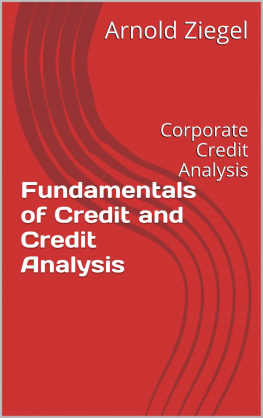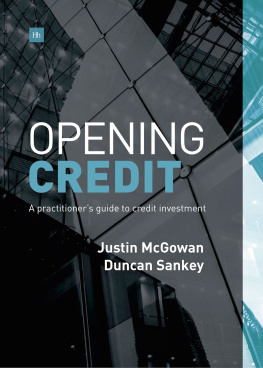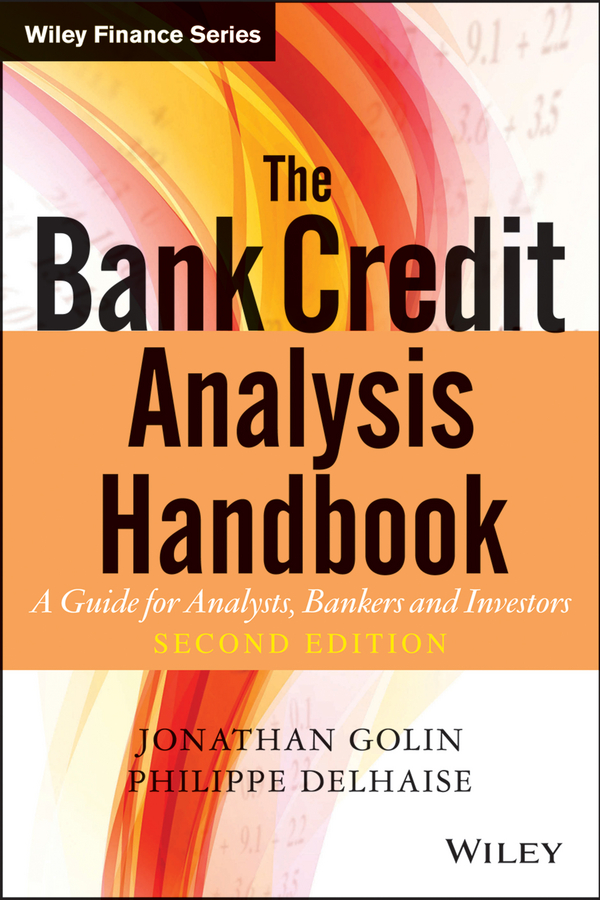Contents
Founded in 1807, John Wiley & Sons is the oldest independent publishing company in the United States. With offices in North America, Europe, Australia and Asia, Wiley is globally committed to developing and marketing print and electronic products and services for our customers professional and personal knowledge and understanding.
The Wiley Finance series contains books written specifically for finance and investment professionals as well as sophisticated individual investors and their financial advisors. Book topics range from portfolio management to e-commerce, risk management, financial engineering, valuation and financial instrument analysis, as well as much more.
For a list of available titles, visit our Web site at www.WileyFinance.com .

Cover Design: Leiva-Sposato
Cover Image: Gradient Pavel Khorenyan/iStockphoto;
Bank note Luis Pedrosa/iStockphoto
Copyright 2013 by John Wiley & Sons Singapore Pte. Ltd.
Published by John Wiley & Sons Singapore Pte. Ltd.
1 Fusionopolis Walk, #07-01, Solaris South Tower, Singapore 138628
All rights reserved.
First edition published in 2001.
No part of this publication may be reproduced, stored in a retrieval system, or transmitted in any form or by any means, electronic, mechanical, photocopying, recording, scanning, or otherwise, except as expressly permitted by law, without either the prior written permission of the Publisher, or authorization through payment of the appropriate photocopy fee to the Copyright Clearance Center. Requests for permission should be addressed to the Publisher, John Wiley & Sons Singapore Pte. Ltd., 1 Fusionopolis Walk, #07-01, Solaris South Tower, Singapore 138628, tel: 6566438000, fax: 6566438008, e-mail: .
Limit of Liability/Disclaimer of Warranty: While the publisher and author have used their best efforts in preparing this book, they make no representations or warranties with respect to the accuracy or completeness of the contents of this book and specifically disclaim any implied warranties of merchantability or fitness for a particular purpose. No warranty may be created or extended by sales representatives or written sales materials. The advice and strategies contained herein may not be suitable for your situation. You should consult with a professional where appropriate. Neither the publisher nor the author shall be liable for any damages arising herefrom.
Other Wiley Editorial Offices
John Wiley & Sons, 111 River Street, Hoboken, NJ 07030, USA
John Wiley & Sons, The Atrium, Southern Gate, Chichester, West Sussex, P019 8SQ, United Kingdom
John Wiley & Sons (Canada) Ltd., 5353 Dundas Street West, Suite 400, Toronto, Ontario, M9B 6HB, Canada
John Wiley & Sons Australia Ltd., 42 McDougall Street, Milton, Queensland 4064, Australia
Wiley-VCH, Boschstrasse 12, D-69469 Weinheim, Germany
Library of Congress Cataloging-in-Publication Data
ISBN 978-0-470-82157-2 (Hardcover)
ISBN 978-0-470-82943-1 (ePDF)
ISBN 978-0-470-82942-4 (Mobi)
ISBN 978-0-470-82944-8 (ePub)
Preface to the New Edition
In early 1997, Jonathan Golin applied for a position of bank credit analyst with Thomson BankWatch. He had limited experience in financial analysis, let alone bank financial analysis, but Philippe Delhaise, then president of BankWatchs Asia division, had long held the view that outstanding brains, good analytical skills, a passion for details, and a degree of latent skepticism were the best assets of a brilliant bank financial analyst. He immediately hired Jonathan.
Jonathan joined a team of very talented senior analysts, among them Andrew Seiz, Damien Wood, Tony Watson, Paul Grela, and Mark Jones. Philippe and the Thomson BankWatch Asia team produced, as early as 1994 and 1995, forewarning reports on the weaknesses of Asias banking systems that led to the Asian crisis of 1997.
After the crisis erupted, Philippe made countless presentations on all continents, and he conducted, with some of his senior analysts, a number of seminars on the Asian crisis. This led to a contract with John Wiley & Sons for Philippe to produce a book on the 1997 crisis that was very well received, and which we hope the reader will forgive us for quoting occasionally.
When in 1999 John Wiley & Sons started looking for a writer who could put together a comprehensive bank credit analysis handbook, Philippe had neither the time nor the courage to embark on such a voyage, but he encouraged Jonathan to take the plunge with the support of unlimited access to Philippes notes and experience, something Jonathan gave him credit for in the first edition of the Bank Credit Analysis Handbook , published in 2001.
Meanwhile, Thomson BankWatchat one point renamed Thomson Financial BankWatchmerged with Fitch in 2000, but Philippe and Jonathan quit prior to the merger. Philippe carried on teaching finance and conducting seminars on bank risk management in a number of countries. Recently, in Hong Kong, Philippe cofounded CTRisks Rating, a new rating agency using advanced techniques in the analysis of risk. Jonathan moved to London, where he founded two companies devoted to bank and company risk analysis.
During the 2000s, the risk profile of most banks changed dramatically. Many changes took place in the manner banks had to manage and report their own risks, and in the way such risks shaped a banks own credit risk, as seen from the outside. Jonathans book needed an overhaul rather than a cosmetic update. This is how eventually Jonathan and Philippe joined forces to present this new, expanded edition to our readers.
In the preface of the first edition, Jonathan thanked Darren Stubing for his substantial contribution to several chapters, and most likely some of Darrens original input still pervades this new version of the book. The same applies to texts contributed by Andrew Seiz in the first edition, and there is no doubt that research done by the Thomson BankWatch Asia team, together with some of their New Yorkbased colleagues, permeates the analytical line adopted both in Jonathans first edition and in the present new edition of The Bank Credit Analysis Handbook . The only direct outside contribution to this edition is coming from Richard Lumley in the chapter on risk management. We are thankful to all direct and indirect contributors.
DRAMATIC CHANGES
The crisis that started in 2007 is still on at the time of writing. Banks and financial systems should share the blame with profligate politicians, outdated socioeconomic models, and a shift of the worlds center of gravity toward newcomers.
However deep the resentment against banking and financeoften fanned by otherwise entertaining political slogansbanks are here to stay.
Banks remain a major conduit for the transformation of savings into productive investments. It is particularly so in emerging countries where capital markets are still not sufficiently developed and where savers have limited access to direct credit risk opportunities. Even in advanced economies, access to market risk often involves dealing with banks whose contribution as intermediaries is sometimesand often justifiablyquestionable.
More than most other financial intermediaries, banks do carry substantial credit and market risks. They act as shock absorbers by removing from their depositors shouldersand charging, alas, hefty fees for the servicesome of that burden.
As we shall point out in this book, weak banks actually rarely failthey often merge or get nationalizedor at least their problems rarely translate into losses for depositors or creditors. Major disasters do occur, though, and we should not dismiss the view that the mere possibility of such an occurrence is enough for state ownership or state control of banks to gain respect in spite of the huge inefficiencies such models introduce. At the very least, banks should be submitted, within reason, to better regulatory control.










